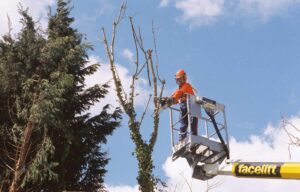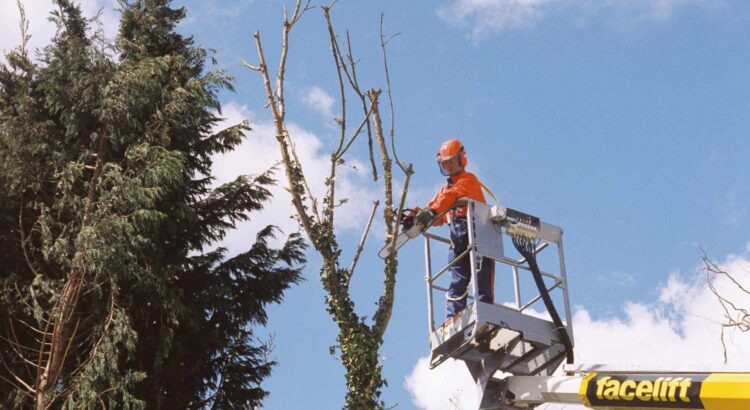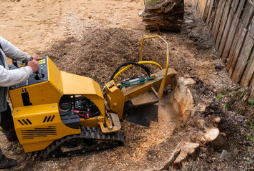Keeping trees and shrubs pruned is important to maintaining a healthy landscape. Palm Tree Trimming Scottsdale is essential for preventing injuries caused by low-hanging branches. Helps prevent fungus from spreading to the rest of the tree.
Thinning areas of dense branch clusters and removing extra shoots promotes proper growth by increasing direct sunlight while eliminating branches that block views or obstruct traffic. It is important not to top shade trees, as it can have serious implications on the health of the tree and its overall appearance.

Tree trimming is an important aspect of tree care that helps ensure the health of your trees. It can remove dead or diseased branches, encourage new growth, and enhance the overall appearance of your property. Whether you have one large tree or an entire yard filled with trees and shrubs, regular trimming can help protect your property from damage and make it look great year-round.
When a tree is left unattended, it can grow too fast, resulting in an uneven appearance. Overgrown branches can also block sunlight from reaching other parts of the tree, inhibiting its growth. This can cause the tree to become unhealthy, leading to problems like rot or decay.
In addition, dead or dying branches can fall during storms and cause damage to your home or property. Trimming dead branches helps reduce the risk of injury or property damage and prevents the spread of infection or disease to other parts of the tree.
Trimming can also help the tree grow healthier by removing branches that are obstructing sightlines or causing structural damage. It can also improve the flow of air around the tree and reduce stress on selected limbs caused by wind, ice or snow.
The thinning of dense branch clusters is a common practice in tree pruning. This reduces the density of a tree, increases sunlight penetration and allows more even growth. This also can help solve problems of crowded growth, where thick inner branches rob other areas of the tree of energy.
While there are many benefits of tree trimming, it is important to note that this should be done by a professional ISA-Certified arborist. They can identify any disease or insect problem and suggest the appropriate treatment to prevent further issues. It is also important to consider the timing of when your trees are trimmed. For example, some species of tree respond differently to being trimmed during their dormant or active seasons. Choosing the right time to trim will have a significant impact on the health and appearance of your landscape.
Trees with missing branches can look unkempt, but correct trimming improves their appearance and enhances your property’s value. Trees can also become damaged when they are not trimmed, making them less attractive to the eye and a potential safety hazard for people or vehicles.
Regular tree trimming will encourage new growth that promotes a healthy shape and improves the look of your landscaping. In addition, correct pruning can boost flower production and optimize fruit yields.
Incorrect pruning, however, can stunt a plant’s growth and lead to damage or even death. In addition, improper cutting can expose a plant to pests and diseases. That’s why it’s important to have an experienced tree trimming professional take care of your trees.
The best time to trim a tree is during its dormant season, which usually occurs from November through March. This isn’t only easier for the trimmer, as there are no leaves to remove, but it is also healthier for the tree.
Pruning during the dormant season helps minimize insect infestation and disease transmission and gives professionals an opportunity to inspect a tree for damage or health issues. There are several different types of cuts that can be made to a tree during this time. One such cut, called a thinning cut, reduces the number of branches on a shrub or tree by removing entire branches. This helps the remaining branches to grow larger and promotes airflow around a tree. Another type of cut, called crown lifting, involves removing the lower branches on a tree. This can help a tree to grow above sidewalks, roads and houses and creates more openness in the landscape.
Trees that are not trimmed properly can be a safety hazard. Overgrown branches can fall during storms or high winds, damaging homes and causing injuries to people or pets. Falling limbs can also damage property, like cars or fences. Properly trimming trees helps to prevent this type of damage by removing branches that are close to the ground or power lines.
Overgrown branches and limbs can also block sunlight from other parts of the yard or garden, preventing those areas from growing well. Regular trimming can help ensure that all the plants on your property receive enough sunlight and grow healthy.
Many people who attempt DIY tree trimming don’t use proper equipment to do so, like safety harnesses or ladders. These people are at a higher risk of falling out of the tree and getting injured. Professionals know the best way to trim a tree without hurting themselves or others.
In addition, tree trimming requires a lot of physical labor. People who are not in good shape may find it difficult to trim large trees, especially if they are over 50 feet tall. This can lead to serious injury or even death if someone falls out of the tree. Professionals are trained to do this work safely and have the right equipment for the job.
Working with a partner and keeping a safe distance from overhead power lines is another important part of tree trimming. Contact with energized power lines can cause electrocution, the most common injury to tree trimmers. If a tree is in proximity to power lines, it should be surveyed by an experienced, line-clearance tree trimmer and de-energized by the utility company before starting the job.
In one case, an employee was killed after misjudging the distance from an overhead power line while cutting a branch that fell and touched the line. The National Institute for Occupational Safety and Health recommends that tree trimmers read all the directions that come with their climbing and trimming equipment, and follow them carefully to avoid electrocution and other accidents. It is also a good idea to wear a hard hat and do a pre-start inspection of the area before beginning any work.
When you prune a tree, it improves the overall look of your landscape. This helps your property look well-kept and clean, and it boosts the appearance of your home as a whole. People will be more interested in taking a look inside your house if it looks appealing from the outside, and that’s why regular trimming is so important.
Untrimmed trees can damage your property in a number of ways. They can scrape against your house or fence, hit power lines, or fall into your yard and cause expensive damage. Trimming can prevent these problems by keeping your trees trimmed back so they don’t overgrow and become a hazard.
Moreover, trimming can also help your trees grow better. By thinning dense branches and removing extra shoots, this service increases sunlight to other areas of the canopy to encourage healthy growth and reduce the risk of disease and insect infestation. It can even alter the direction of some branches’ growth, which is helpful when thick internal parts rob other branches of vitality and prevent them from growing to their full potential.
In addition, thinning a dense canopy also helps other plants in your garden thrive. Overgrown limbs often block sunlight from other flowers, shrubs, and vegetables, inhibiting their growth and hindering them in their ability to produce food. This is especially true for fruit trees, which can be damaged by sunlight deprivation. Trimming helps these trees get more sunshine, which means they’re more likely to produce abundant harvests.
Another benefit of trimming is that it can prevent pests from getting into your house. Overgrown limbs can scrape against your roof or slam into it during a storm, and they can also provide nesting space for insects and rodents. Tree trimming can eliminate these pests’ entry points and prevent them from damaging your home, as well as preventing them from spreading their disease throughout the landscape.
While it might seem like a chore to keep your trees regularly trimmed, it’s essential for keeping them healthy and safe. It enhances your property’s appearance, boosts its value, and protects your family and property from dangerous conditions. It can also be a great way to prevent costly damages and save money on landscaping costs.

